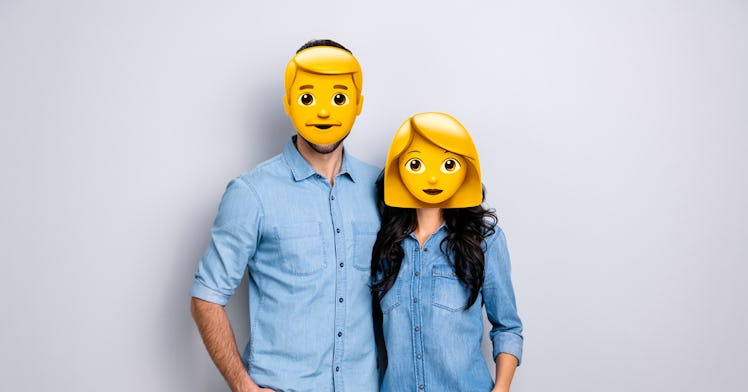Science Explains Why So Many Couples Look Alike
Some couples look more like siblings and it's not entirely because like attracts like.

Stop us if you’ve heard this one: Brad Pitt looks a lot like the women he dates. Or is it the other way around? For the past couple of years, these questions have sprung many a social media debate and memes, showing pictures of Pitt next to the woman he’s dating, morphing to match their looks. It’s too uncanny to be entirely a joke. Even Gwyneth Paltrow responded to it saying “or maybe we look like him, let’s face it.”
You don’t even need to be in on the Pitt jokes to notice that sometimes couples look-alike, or start to overtime. It’s not just in your head.
Decades ago, researchers at the University of Michigan decided to study why married couples who grow older together tend to look like each other over time. They analyzed pictures of white, heterosexual newlywed couples, and then the same couples 25 years later and found that couples had grown to look similar. They theorized that years of shared emotions lead to similar wrinkles and expressions. So if your partner makes a joke and you laugh at it together, you eventually adopt each other’s expressions and begin to develop the same laugh lines overtime.
While this theory has been cited in research over the years, there’s been other work that suggests that it may be less about how you develop together over time and more about what you initially select when looking for a partner. A 2005 study of twins found the spouses of twins were more alike than the spouses of non-identical twins. So it could be that we subconsciously pick partners who are genetically like us.
A more recent study from 2013 supports this idea. Participants of the experiment were shown images of their partner’s face that had been altered to include features from either a random face or their own face. Male and female participants consistently rated the pictures that included their own face as more attractive. Another study tried to find evidence to support Sigmund Freud’s famous creepy “attracted to people like our parents” theory by flashing a picture of participants’ opposite-sex parents quickly across the screen before showing them a face and asking them to rate the attractiveness. In great deference to Sophocles, researchers found that participants rated images of others as more attractive when they saw the picture of their opposite-sex parent first.
A 2018 study tried to test this hypothesis in biracial couples and found that “although biracial adults were more likely to pair with and be attracted to others who resembled their parents compared to those who did not, the sex of the parent was largely inconsequential.” These studies show that there may be some basis to the theory that we select partners similar to our biological makeup.
But there’s another way to look at it. Ben Domingue, assistant professor at Stanford who studies genetic similarity between spouses and friends, has published research that indicates that people who are alike tend to find each other because of similarities in social contexts or cultural grounds.
In other words, it’s not yet well understood if people with a similar genetic makeup tend to gravitate toward the same social activities, or if that’s not directly correlated to people with similar genetics being in the same environments. Is it nature or nurture? “It’s awfully hard to disentangle the two,” says Domingue.
Online dating may help us address this question. Since people are now able to look for partners beyond their immediate social circle, more diverse couples are propping up. Pew Research finds that 17 percent of American couples are interracial in 2015, up from 7 percent in 1980. Only time (and more research) will tell if this changes the way we understand the attraction, who we choose to spend our lives with, and how much they look like us. Until then, you do you, Brad Pitt. We’ll be watching.
This article was originally published on